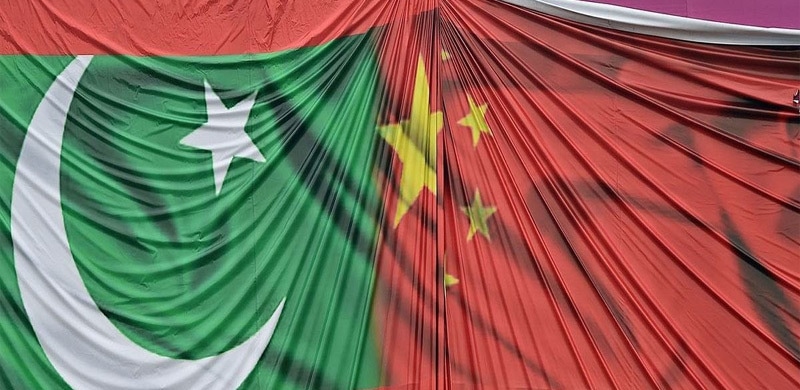With China’s growing influence and Pakistan’s modernised fleet, the emerging naval alliance poses a direct challenge to India’s strategic objectives in the Indian Ocean
read more
(File) Naval ships of the participating countries sail during the sea phase of the Pakistan Navy’s Multinational Exercise AMAN-23, in the North Arabian Sea near Karachi, Pakistan, February 13, 2023. Reuters
The partnership between China and Pakistan has grown stronger in recent years, especially in the naval sector. This includes joint military exercises and upgrading Pakistan’s naval fleet. These efforts aim to change the balance of power in the Indian Ocean Region (IOR). For India, this is a serious concern as it affects its maritime security, energy routes and regional influence.
China-Pakistan naval exercises
Joint naval exercises are a key part of China-Pakistan cooperation. The Sea Guardian series, held regularly since 2020, shows how deep their partnership has grown, focusing on advanced maritime and aerial operations. The latest exercise, Sea Guardian-3, took place in November 2023 in the Arabian Sea and showcased their ability to work together in combat scenarios.
Similarly, the AMAN series of multinational exercises, hosted by the Pakistan Navy, further strengthens their ability to operate together. The upcoming AMAN-25 exercise, scheduled for February 2025 in Karachi and led by Pakistan’s Chief of Naval Staff Admiral Naveed Ashraf, aims to promote regional cooperation against threats like maritime terrorism and organised crime.
For India, these exercises are a serious concern. The improved coordination between China and Pakistan directly challenges India’s maritime dominance, especially in the Arabian Sea. These exercises not only enhance Pakistan’s combat readiness but also boost its strategic position, making it a stronger adversary.
Modernisation of Pakistan’s fleet
One of the most important aspects of China-Pakistan naval collaboration is the modernisation of Pakistan’s fleet. In May 2023, the delivery of four Type 054A/P frigates was a significant milestone.
These multi-role frigates, equipped with advanced CM-302 surface-to-surface missiles and LY-80 surface-to-air missiles, greatly improve the Pakistan Navy’s combat capabilities. Admiral Ashraf highlighted their role in an interview to the Global Times as the backbone of Pakistan’s naval fleet emphasising their importance in strengthening the country’s maritime defence.
The Hangor-class submarine project, started in 2015, is another key part of this modernisation effort. With eight submarines under construction—four in China and four in Pakistan—this partnership not only boosts Pakistan’s underwater capabilities but also helps develop its domestic shipbuilding expertise.
These submarines, equipped with advanced air-independent propulsion systems, offer greater submerged endurance and stealth, presenting a serious challenge to India’s naval operations. The launch of the first Hangor-class submarine in April 2024, with full delivery expected by 2028, highlights Pakistan’s commitment to expanding its options in underwater warfare.
Although Pakistan faces economic challenges, these advancements significantly enhance its naval power. For India, the strengthened capabilities of Pakistan’s fleet, with China’s support, suggest a shift toward a more offensive approach, which could challenge India’s dominance in the IOR.
Gwadar port: A strategic choke point
The development of Gwadar port under the China-Pakistan Economic Corridor (CPEC) adds more complexity to India’s maritime security concerns. Located near the Strait of Hormuz, Gwadar is a strategic asset for both China and Pakistan. For China, the port secures important energy supply routes and boosts its influence in the IOR. For Pakistan, Gwadar provides a logistical and strategic advantage, allowing a forward presence close to crucial sea lanes.
This collaboration has major implications for India. Gwadar’s closeness to India’s western coastline and its location near key shipping routes increase the threat to India’s energy security and trade interests. The port could also serve as a base for Chinese naval operations, further surrounding India in the IOR. India needs to respond by strengthening its presence in nearby areas and enhancing partnerships with regional powers like Oman and the United Arab Emirates.
Turkey’s role in diversifying Pakistan’s naval arsenal
While China is the main driver of Pakistan’s naval modernisation, Turkey has also become an important partner. Through a 2018 agreement, Pakistan is acquiring Milgem-class corvettes designed by Turkey. These advanced ships, expected to be delivered by 2025 will improve Pakistan’s surface fleet capabilities adding a new element to its maritime strategy.
For India, this expansion of Pakistan’s naval partnerships makes the situation more complex. Turkey’s involvement shows that Pakistan is using multiple alliances to modernise its forces. This developm

